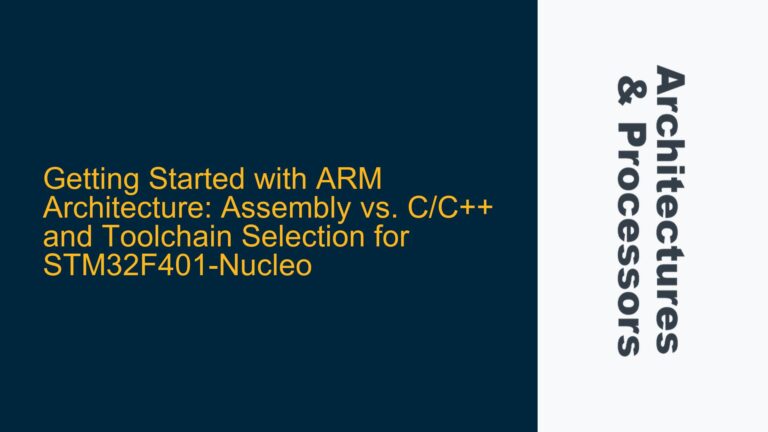ARM Fast Models: Synchronization Latency and Global Quantum Interaction
In ARM Fast Models, the parameters scx_min_sync_latency and tlm_global_quantum play critical roles in determining the synchronization behavior and simulation performance of the system. The scx_min_sync_latency defines the minimum time interval between synchronization points, while tlm_global_quantum sets the maximum amount of simulated time that can elapse before synchronization must occur. These parameters are essential for balancing simulation accuracy and performance, particularly in complex System-on-Chip (SoC) designs where multiple components interact across different clock domains.
The relationship between scx_min_sync_latency and tlm_global_quantum is not explicitly documented in the ARM Fast Models user guide, leading to confusion about their interaction. Specifically, it is unclear how these parameters influence each other when set to different values, which instructions or events might cause early synchronization, and what best practices should be followed when configuring them. This analysis aims to provide a detailed explanation of their relationship, potential causes of synchronization issues, and actionable solutions for optimal configuration.
Memory Access Patterns and Synchronization Timing
The primary cause of confusion between scx_min_sync_latency and tlm_global_quantum lies in their overlapping roles in managing synchronization points during simulation. The tlm_global_quantum parameter is a SystemC construct that defines the maximum amount of simulated time that can pass before all components in the simulation must synchronize. This ensures that events occurring in different parts of the system are properly aligned in time. On the other hand, scx_min_sync_latency is specific to ARM Fast Models and defines the minimum time interval between synchronization points, effectively acting as a lower bound for synchronization frequency.
When scx_min_sync_latency is set to a value smaller than tlm_global_quantum, the simulation may yield control more frequently than dictated by the global quantum. This can occur due to specific instructions or events that require immediate synchronization, such as memory accesses that cross clock domains or interactions with peripherals that have strict timing requirements. Conversely, if scx_min_sync_latency is set to a value larger than tlm_global_quantum, the global quantum will dominate, and synchronization will occur less frequently, potentially leading to inaccuracies in timing-sensitive simulations.
Another factor contributing to synchronization behavior is the nature of the simulated workload. For example, workloads with frequent memory accesses or high levels of inter-component communication may trigger additional synchronization points due to the need to maintain consistency across the system. In such cases, the effective synchronization interval may be closer to scx_min_sync_latency than to tlm_global_quantum, even if the latter is set to a larger value.
Configuring Synchronization Parameters for Optimal Performance
To address the challenges associated with scx_min_sync_latency and tlm_global_quantum, a systematic approach to configuration is required. The first step is to analyze the specific requirements of the simulation, including the timing constraints of the components involved and the nature of the workload. For example, simulations involving real-time peripherals or tightly coupled multiprocessor systems may require more frequent synchronization to ensure accurate timing behavior.
Once the requirements are understood, the next step is to set tlm_global_quantum to a value that balances simulation performance and accuracy. This value should be chosen based on the longest interval between events that require synchronization. For example, if the system includes components that operate at significantly different clock speeds, the global quantum should be set to a value that ensures synchronization occurs frequently enough to capture interactions between these components.
After setting tlm_global_quantum, scx_min_sync_latency should be configured to reflect the minimum synchronization interval required by the system. This value should be chosen based on the timing requirements of the most time-sensitive components in the simulation. For example, if the system includes a high-speed memory interface that requires frequent synchronization, scx_min_sync_latency should be set to a value that ensures synchronization occurs at least as frequently as the memory interface’s timing constraints dictate.
In cases where scx_min_sync_latency and tlm_global_quantum are set to different values, it is important to monitor the simulation for signs of synchronization issues, such as timing inaccuracies or unexpected behavior. If such issues are observed, the values of these parameters should be adjusted iteratively until the desired balance between performance and accuracy is achieved.
To further optimize synchronization behavior, advanced techniques such as dynamic adjustment of synchronization parameters based on simulation state can be employed. For example, the simulation could be configured to reduce scx_min_sync_latency during periods of high inter-component communication and increase it during periods of low activity. This approach can help to minimize synchronization overhead while maintaining accurate timing behavior.
In summary, the relationship between scx_min_sync_latency and tlm_global_quantum is complex and depends on the specific requirements of the simulation. By carefully analyzing these requirements and iteratively adjusting the synchronization parameters, it is possible to achieve a configuration that balances simulation performance and accuracy. The key is to understand the timing constraints of the system and to use this understanding to guide the configuration process.






